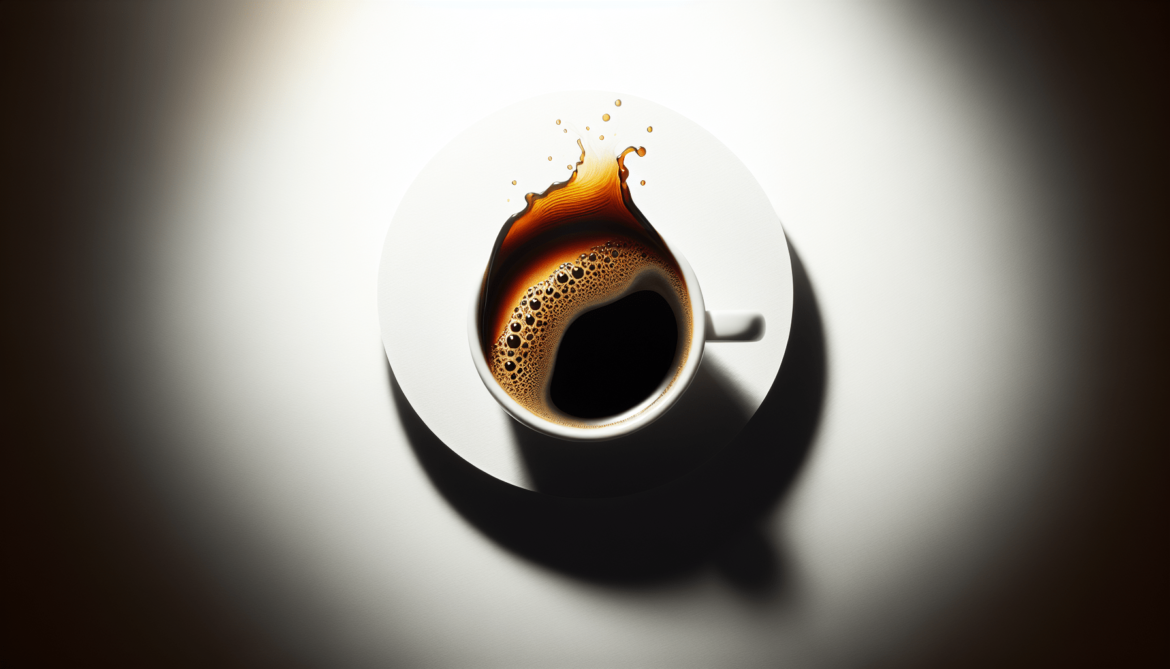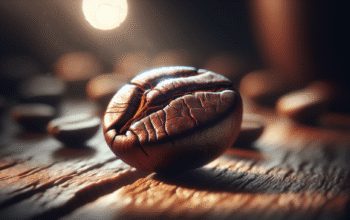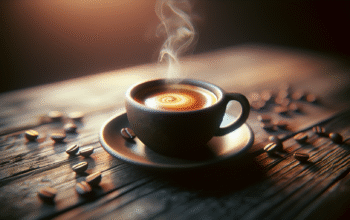Imagine waking up to the enticing aroma of freshly brewed coffee, the perfect start to your day. Have you ever wondered what goes into brewing the perfect coffee bean? From selecting the finest beans to mastering the brewing techniques, this article explores the art of creating the most flavorful and indulgent cup of coffee you can imagine. Whether you prefer a classic dark roast or a refreshing ice-blended creation, join us on a journey to uncover the secrets behind the perfect coffee bean.
Choosing the Right Coffee Beans
When it comes to brewing the perfect cup of coffee, one of the most important factors is choosing the right beans. There are several factors to consider when selecting coffee beans, including the type of beans, their origin, and the roasting profile.
Understanding Different Types of Coffee Beans
Coffee beans typically come in two main varieties: Arabica and Robusta. Arabica beans are known for their delicate flavors and aromatic qualities, making them the preferred choice for most specialty coffees. On the other hand, Robusta beans are often used in blends or for making espresso due to their higher caffeine content and more robust flavors.
Researching Origin and Roasting Profiles
Another important aspect to consider when choosing coffee beans is their origin and roasting profile. Different regions around the world produce coffee beans with unique flavor profiles. For example, beans from Ethiopia often have fruity and floral notes, while those from Brazil tend to have a nutty and chocolatey taste. Additionally, the degree of roasting also affects the flavor of the beans, with lighter roasts preserving more of the bean’s natural flavors and darker roasts offering a richer and more robust taste.
Selecting Beans Based on Personal Preference
Ultimately, the best coffee beans are the ones that suit your personal taste preferences. Some coffee enthusiasts enjoy the bright and acidic flavors of light roasts, while others prefer the bold and smoky flavors of dark roasts. Experiment with different types of beans, origins, and roasting profiles to find the perfect match for your palate. Keep in mind that everyone’s taste is unique, so don’t be afraid to explore and find your own favorite coffee beans.
Storing Coffee Beans Properly
To ensure that your coffee beans stay fresh and flavorful for as long as possible, proper storage is crucial. Here are some tips on how to keep your beans in top condition.
Keeping Beans in Airtight Containers
Exposure to air is one of the main factors that can cause coffee beans to lose their freshness. To prevent this, store your beans in airtight containers. Mason jars, ceramic canisters, or specially designed coffee storage containers with airtight seals are all great options. Make sure to seal the container tightly after each use to minimize air exposure.
Avoiding Direct Sunlight and Heat Exposure
Light and heat can also degrade the quality of coffee beans over time. Therefore, it is best to store your beans in a cool and dark place, away from direct sunlight and heat sources such as stovetops or ovens. Avoid storing them in the refrigerator, as the moisture and odors can affect the flavor of the beans.
Considering Freezing for Long-Term Storage
If you have a large supply of coffee beans and want to store them for an extended period, freezing can be an option. However, it is essential to package the beans properly to prevent moisture and freezer burn. Divide the beans into small airtight bags or containers and place them in the freezer. When you are ready to use them, allow the beans to thaw completely before grinding or brewing to avoid any moisture-related issues.
Grinding Techniques for Optimal Flavor
Grinding your coffee beans just before brewing is vital to achieving the best flavor in your cup. Here are some tips for grinding your beans like a pro.
Investing in a Quality Burr Grinder
To achieve a consistent grind size and extract the most flavor from your beans, it is highly recommended to invest in a quality burr grinder. Burr grinders provide a more precise and even grind compared to blade grinders, which can result in uneven extraction and a subpar tasting brew. Look for a grinder that offers various grind settings and allows you to adjust the grind size according to your brewing method.
Adjusting Grind Size for Different Brewing Methods
Different brewing methods require different grind sizes to achieve optimal flavor. For example, a coarser grind works well for French press or cold brew, while a finer grind is needed for espresso or pour-over. Experiment with different grind sizes to find the sweet spot for each brewing method you enjoy. Remember, the right grind size can greatly impact the extraction and taste of your coffee.
Understanding the Importance of Consistency
Consistency is key when it comes to grinding coffee beans. Aim to achieve a uniform grind size by adjusting your grinder accordingly. Inconsistent particle sizes can lead to under-extraction or over-extraction, resulting in a bitter or weak cup of coffee. Take the time to dial in your grinder and ensure that each batch of beans is ground consistently for the best brewing results.
Water Quality and Temperature
While coffee beans play a significant role in the taste of your brew, the quality of the water and its temperature also contribute to the final result. Here’s how you can ensure that these factors are optimized.
Using Filtered Water for Brewing
The quality of water used for brewing can greatly impact the flavor of your coffee. Tap water often contains impurities such as chlorine or minerals that can interfere with the taste. To avoid this, consider using filtered water, either through a water filtration system or a simple activated carbon filter. Filtered water helps bring out the true flavors of the coffee beans without any unwanted taste or odor.
Finding the Ideal Water-to-Coffee Ratio
To achieve a well-balanced and flavorful cup of coffee, it is crucial to find the right water-to-coffee ratio. The general guideline is to use around 1 to 2 tablespoons of coffee grounds for every 6 ounces of water. However, personal preference may vary, so feel free to adjust the ratio to suit your taste. Experiment with different ratios and take note of the flavors you prefer.
Understanding Optimal Water Temperature
Water temperature also plays a significant role in coffee extraction. The ideal water temperature for brewing coffee is between 195°F to 205°F (90°C to 96°C). Water that is too hot can result in over-extraction and bitterness, while water that is too cold may lead to under-extraction and a weak brew. Use a reliable thermometer to ensure that your water is within the optimal temperature range for the best brewing results.
The Brewing Equipment
Having the right brewing equipment and understanding how to use it properly can elevate your coffee brewing experience. Let’s take a look at some of the key aspects to consider.
Exploring Various Brewing Methods (e.g., Pour-Over, French Press, Espresso)
There are numerous brewing methods available, each offering a unique flavor profile and brewing experience. Some popular brewing methods include pour-over, French press, and espresso. Take the time to explore different brewing techniques and find the ones that resonate with you. Each method requires specific equipment and has its own set of brewing parameters, so it’s essential to understand the basics of each brewing method before getting started.
Choosing the Right Equipment for Each Method
Once you have decided on a brewing method, it’s time to invest in the appropriate equipment. For pour-over brewing, a dripper, paper filters, and a kettle with a gooseneck spout are essential. French press brewing requires a press pot, coarse-ground coffee, and a timer. If you’re into espresso, an espresso machine and a quality grinder are necessary. Do thorough research and read reviews to find reliable and well-suited equipment for your preferred brewing method.
Maintaining and Cleaning Brewing Tools
Proper maintenance and cleaning of your brewing equipment are crucial for optimal performance and longevity. After each use, rinse your equipment with hot water to remove any coffee residue or oils. If possible, disassemble any removable parts and clean them separately. Periodically deep clean your equipment using a descaling solution or vinegar to remove mineral deposits. Following the manufacturer’s instructions for care and maintenance is highly recommended to ensure that your brewing tools remain in excellent condition.
Mastering the Coffee-to-Water Ratio
Finding the perfect coffee-to-water ratio is essential for achieving your desired strength and flavor. Here’s how you can master this important aspect of brewing.
Finding the Perfect Balance for Desired Strength
The coffee-to-water ratio determines the strength of your brew. If you prefer a stronger cup, increase the amount of coffee grounds used for a given amount of water. For a milder taste, reduce the quantity of coffee. Finding the perfect balance may require some trial and error, so don’t be afraid to experiment until you find your desired strength.
Understanding Variables That Affect Ratio
Keep in mind that several variables can affect the coffee-to-water ratio, including the grind size, brewing method, and personal taste. Coarser grind sizes often require a higher coffee-to-water ratio, while finer grind sizes may require less. Similarly, different brewing methods have their own recommended ratios. Additionally, personal taste plays a significant role, as everyone’s preferences differ. Don’t be afraid to adjust the ratio based on these variables and your own taste buds.
Experimenting and Adjusting to Personal Taste
Brewing coffee is a highly customizable process, allowing you to tailor your brew to your personal preferences. As you become more experienced, feel free to experiment and adjust the coffee-to-water ratio based on your taste preferences. Keep a brewing journal to track your experiments and note any adjustments you make. Over time, you’ll refine your technique and find the perfect coffee-to-water ratio that matches your desired flavor and strength.
The Importance of Freshness
When it comes to coffee, freshness is key. Here are some tips on how to ensure your beans stay fresh and flavorful.
Opting for Whole Beans Instead of Pre-ground
To preserve the flavor and aroma of your coffee, it is best to opt for whole beans instead of pre-ground coffee. Whole beans retain their freshness for a more extended period since they have fewer exposed surfaces that can come into contact with oxygen. Grinding your beans just before brewing helps to keep the flavors intact and ensures a more flavorful cup of coffee.
Avoiding Excessive Stockpiling of Beans
While buying coffee beans in bulk can be cost-effective, it’s essential to avoid excessive stockpiling. Coffee beans are at their peak flavor within a few weeks of being roasted. Therefore, it’s best to purchase beans in smaller quantities and consume them within a reasonable time frame. This way, you can ensure that you’re brewing with the freshest beans possible.
Brewing Coffee Immediately After Grinding
Once you’ve ground your coffee beans, it is crucial to brew them as soon as possible. Grinding exposes the coffee to air and accelerates the oxidation process, causing the flavors to deteriorate over time. To maximize the freshness and flavor of your brew, aim to grind your beans just before brewing. This way, you can experience the fullest expression of the coffee’s characteristics in each cup.
Brewing Techniques for Different Flavors
Coffee beans come in a variety of roasts, each offering a distinct flavor profile. Here’s how you can explore and enhance different flavors through brewing techniques.
Exploring Light, Medium, and Dark Roasts
Different roasts create different flavor profiles in coffee. Light roasts tend to have brighter and more acidic flavors, medium roasts offer a balance between acidity and caramel notes, while dark roasts produce bolder and smokier flavors. Experiment with different roasts to discover your preferred taste profile.
Adjusting Brewing Methods for Desired Flavor Profiles
To enhance the flavors of your chosen roast, adjust your brewing method accordingly. For lighter roasts, pour-over brewing methods can highlight the delicate flavors, while French press brewing can bring out the richness in medium and dark roasts. Espresso brewing is an excellent choice for showcasing the intensity of dark roasts. Consider the roast profile when selecting your brewing method to create a harmonious and enjoyable coffee experience.
Exploring Specialty Coffee and Unique Techniques
If you’re a coffee enthusiast looking for new and exciting flavors, consider exploring specialty coffee and unique brewing techniques. Specialty coffee often consists of beans with exotic origins and distinct flavor profiles. Additionally, alternative brewing methods such as cold brew, Aeropress, or siphon brewing can offer different flavor nuances and brewing experiences. Be open to trying new approaches and enjoy the journey of discovering unique and delightful coffee flavors.
Tasting and Evaluating Your Brew
To truly appreciate the flavors of your brewed coffee, take the time to taste and evaluate each cup. Here are some tips for developing your palate and understanding the nuances of your brew.
Developing Palate with Regular Tasting Sessions
Regular tasting sessions can help train your palate and improve your ability to discern different flavors and aromas in coffee. Set aside some time to focus solely on tasting your brewed coffee. Take small sips, allowing the coffee to coat your palate, and pay attention to the various flavors, acidity, body, and aftertaste. With practice, you’ll become more adept at identifying and appreciating the subtleties in each cup.
Understanding Flavor Notes and Aromas
Coffee can exhibit a wide range of flavor notes and aromas, from fruity and floral to nutty and chocolaty. Familiarize yourself with common flavor descriptors and try to identify them in your brew. Keep in mind that tasting is subjective, and everyone’s perception of flavors may differ slightly. Don’t be afraid to trust your palate and use your own words to describe the flavor profiles you experience.
Evaluating Brewing Techniques and Adjusting
Tasting and evaluating your brew also allows you to assess your brewing techniques and make adjustments if necessary. If you notice any off-flavors or inconsistencies, consider factors such as water temperature, brew time, and brewing method. Experiment with small changes to your technique to optimize the flavors and achieve the best possible cup of coffee. Remember, brewing coffee is an ongoing learning process, and continuous evaluation and refinement will lead to improvement over time.
Experimenting and Personalizing Your Brew
Brewing coffee is an art form that allows for endless creativity and personalization. Here are some ways you can experiment and make your brew truly unique.
Trying Different Bean Blends and Single Origins
Expand your coffee horizons by trying different bean blends and single origins. Each blend or origin has its own flavor characteristics, allowing you to explore new taste profiles and find your favorites. Some coffee roasters offer sampler packs or subscription services that enable you to discover and experience a variety of beans. Embrace the adventure of trying different combinations and enjoy the diverse flavors that coffee has to offer.
Adding Flavors and Ingredients for Specialty Brews
For those who enjoy specialty brews, adding flavors and ingredients can take your coffee experience to the next level. Consider infusing your brew with spices like cinnamon or cardamom, adding a splash of vanilla extract or a drizzle of caramel syrup. You can also explore alternative milk options such as almond milk or oat milk to create unique latte variations. Get creative and have fun concocting your own signature coffee creations.
Creating Signature Recipes and Sharing with Others
Once you’ve discovered your favorite brews and experimented with different flavors, don’t hesitate to share your creations with others. Create recipe cards for your signature coffee drinks and share them with friends, family, or fellow coffee enthusiasts. Hosting a coffee tasting session or simply enjoying a cup of your personalized brew with loved ones can be a delightful way to share your passion for coffee and spread the joy of a perfectly brewed cup.
In conclusion, brewing the perfect cup of coffee involves various elements, from choosing the right beans to understanding water quality, grinding techniques, brewing methods, and personal preferences. By selecting high-quality beans, storing them properly, mastering the coffee-to-water ratio, and experimenting with brewing techniques, you can elevate your coffee brewing skills and enjoy a truly exceptional cup of joe. With patience, practice, and a sense of adventure, you can embark on a journey of discovering unique flavors and perfecting your own personalized brew. So go ahead, grab your favorite beans, and start brewing your way to coffee perfection.



